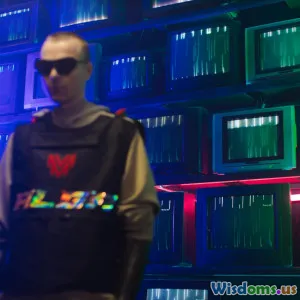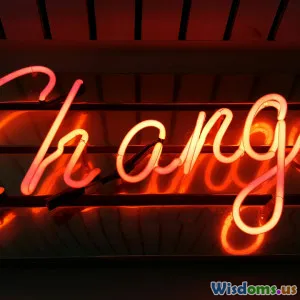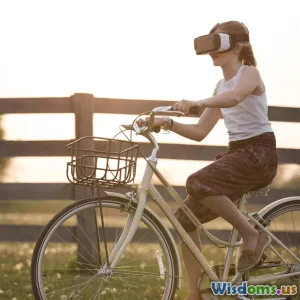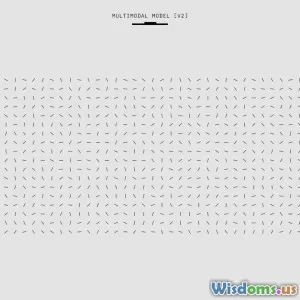
How AI is Transforming Visual Effects in Modern Blockbusters
8 min read Explore how AI is revolutionizing visual effects in blockbusters, enhancing creativity, efficiency, and immersive experiences in film production. (0 Reviews)
How AI is Transforming Visual Effects in Modern Blockbusters
From the sweeping panoramas of fantasy worlds to explosive sci-fi battles, visual effects (VFX) define the cinematic spectacle of modern blockbusters. But behind these breath-taking visuals lies an evolution fueled by artificial intelligence, reshaping how Hollywood crafts immersive experiences. AI—a tool once the stuff of tech labs—is now a pivotal creative partner in filmmaking. This article dives deeply into how AI is transforming the VFX landscape, ushering in new possibilities for storytellers and redefining audience expectations.
Introduction: The Dawn of AI in Movie Magic
Visual effects have always pushed the boundaries of technical innovation, from matte paintings in early cinema to digital compositing that brought Middle-earth to life. Yet, as films demand increasingly complex and detailed images, traditional VFX methods strain under time and budget constraints. Enter AI: with its ability to analyze vast datasets, learn patterns, and generate realistic outputs, AI is not just accelerating VFX but is also expanding creative horizons. The questions now are: how is AI currently being used, what benefits does it bring, and what future awaits the silver screen?
AI-Driven Efficiency in Visual Effects Production
Automating Labor-Intensive Processes
Building photorealistic scenes traditionally requires extensive manual work, from rotoscoping (cutting objects frame-by-frame) to tracking movements and lighting adjustments. AI automates these tasks using machine learning algorithms trained on millions of images and sequences.
For example, Adobe's Sensei AI automates rotoscoping with astonishing accuracy, drastically cutting down time that used to take hours or days for complex edits. This efficiency allows VFX artists to focus on refining the creative vision rather than tedious frame-by-frame edits.
Enhancing Real-Time Rendering
Real-time rendering, essential for virtual production, benefits immensely from AI. NVIDIA’s DLSS (Deep Learning Super Sampling) uses AI to upscale lower-resolution images while maintaining crisp detail, enabling filmmakers to preview complex scenes instantly without sacrificing quality. This accelerates the iterative process on set, saving both time and money.
Data-Driven Simulation Improvements
Simulating natural phenomena like water, fire, smoke, or crowds has always been computationally heavy. AI algorithms now predict physical behavior faster by learning from simulations and real-world data, generating realistic effects that are both cost-effective and visually convincing.
Pushing Creative Boundaries with AI
Hyper-Realistic Character Creation
AI assists in creating highly realistic digital humans, overcoming the 'uncanny valley' effect that once hampered CGI characters. Tools like MetaHuman Creator by Epic Games use procedural generation powered by AI to create lifelike digital actors with incredible detail in skin texture, movement, and expressions.
In blockbusters like The Midnight Sky (2020), AI-enhanced digital de-aging and full CGI performances enabled stunning realism while preserving emotional depth—a giant leap from earlier techniques.
Enhancing Visual Storytelling
AI-powered tools analyze scripts and storyboards to assist directors in visualizing scenes. For instance, AI can suggest shot compositions or lighting setups based on learned cinematography principles, bridging the gap between imagination and execution.
Moreover, AI enables dynamic scene adaptation like adjusting weather or lighting conditions algorithmically without requiring full reshoots or manual overhauls.
Deepfake Technology for Narrative Innovation
Deepfake AI uses generative adversarial networks (GANs) to superimpose actors’ faces realistically for stunts or dubbing in different languages. While raising ethical concerns, its controlled use has enabled seamless integration of multiple actor versions in movies like Rogue One: A Star Wars Story.
Real-World Impact and Industry Adoption
Blockbuster Examples
- Avengers: Endgame employed AI-enhanced facial capture and motion tracking, allowing digital resurrections of characters with remarkable authenticity.
- The Lion King (2019) utilized AI-driven rendering for photorealistic animals and environments, merging virtual cinematography with AI techniques to immerse audiences fully.
Data on Adoption Rates
According to a 2023 report by Visual Effects Society, over 60% of major studios now integrate some form of AI in their VFX pipeline, a sharp increase from just 20% five years prior.
Expert Insights
John Knoll, VFX supervisor for Avatar: The Way of Water, noted, “AI isn’t replacing artists; it’s augmenting their creativity by handling repetitive aspects, which lets us push the storytelling envelope further than ever.”
Challenges and Ethical Considerations
While AI offers tremendous benefits, it brings challenges:
- Quality Control: AI outputs sometimes introduce artifacts needing manual correction.
- Employment Impact: Fear of job displacement prompts studios to emphasize AI as a tool rather than replacement.
- Ethical Use: Deepfake and synthetic media require strict oversight to prevent misuse in misinformation.
Studios often implement human-in-the-loop frameworks where artists supervise AI operations, ensuring balance between automation and creative judgment.
The Future: AI as a Creative Partner
The coming years will likely see AI integrated even deeper into VFX, such as fully AI-generated scenes from rudimentary sketches or voice commands. Interactive AI tools will personalize viewing experiences depending on audience data, arguably ushering in an era of hyper-customizable blockbusters.
Moreover, AI's synergy with emerging technologies—like virtual reality and augmented reality—will redefine immersive entertainment by blending AI-driven VFX with real-time audience interaction.
Conclusion
Artificial intelligence is no longer a background player in filmmaking but a transformative force fueling a new golden age of visual effects in modern blockbusters. By blending human imagination with machine precision and speed, AI empowers creatives to break technical barriers while delivering stunning, believable worlds and characters. As AI continues to evolve, its role as both an enabler and co-creator promises to reshape Hollywood storytelling—inviting audiences worldwide to witness cinematic magic in unprecedented ways.
The future of visual effects isn’t just digital; it’s intelligent.
References:
- Visual Effects Society Annual Report 2023
- NVIDIA DLSS Technology Brief
- Epic Games MetaHuman Creator Documentation
- Interviews from Empire Magazine with John Knoll, 2023
- Adobe Sensei Technology Overview
Explore how innovation and artistry combine through AI to shape the blockbusters of tomorrow.
Rate the Post
User Reviews
Popular Posts





















